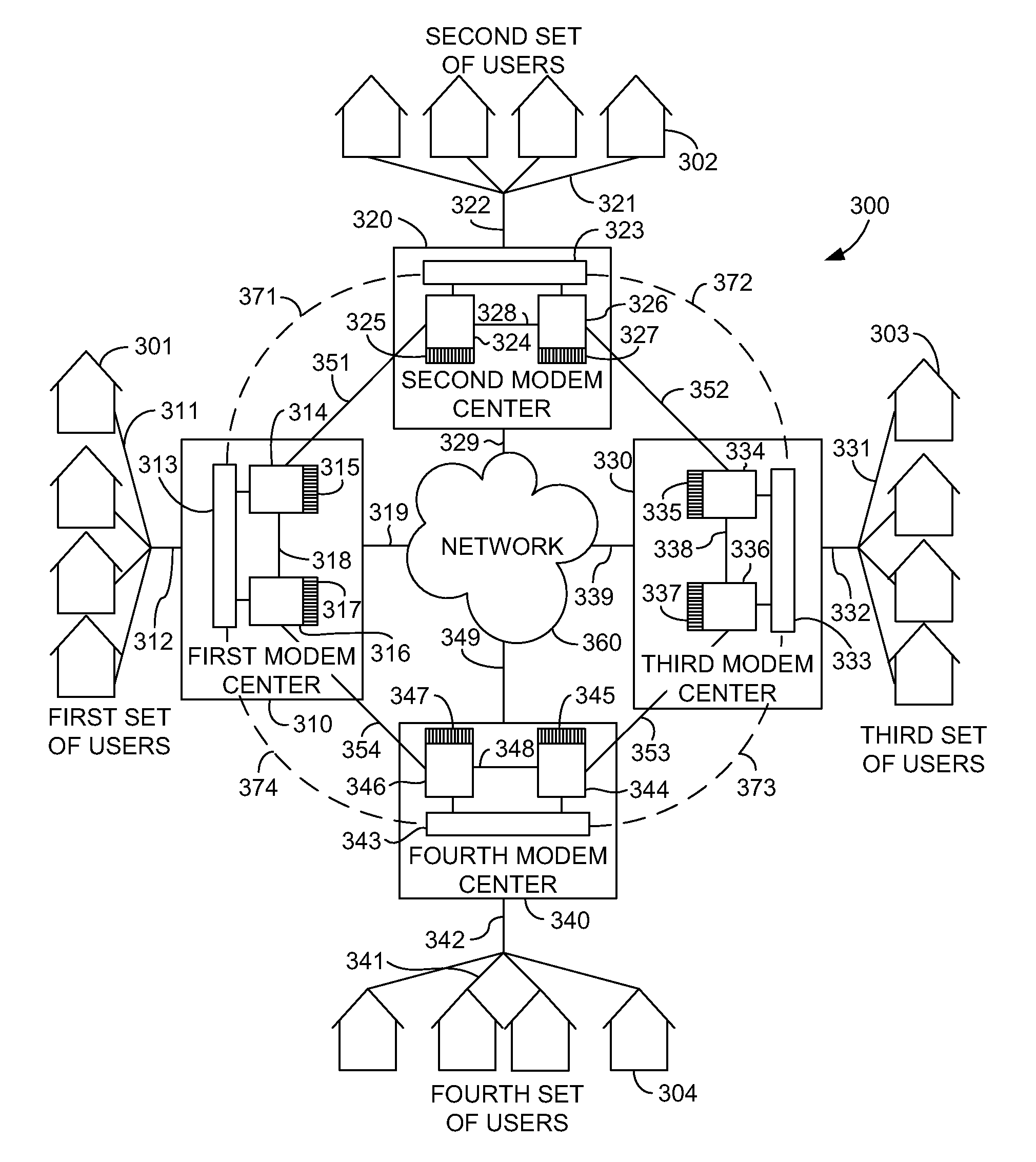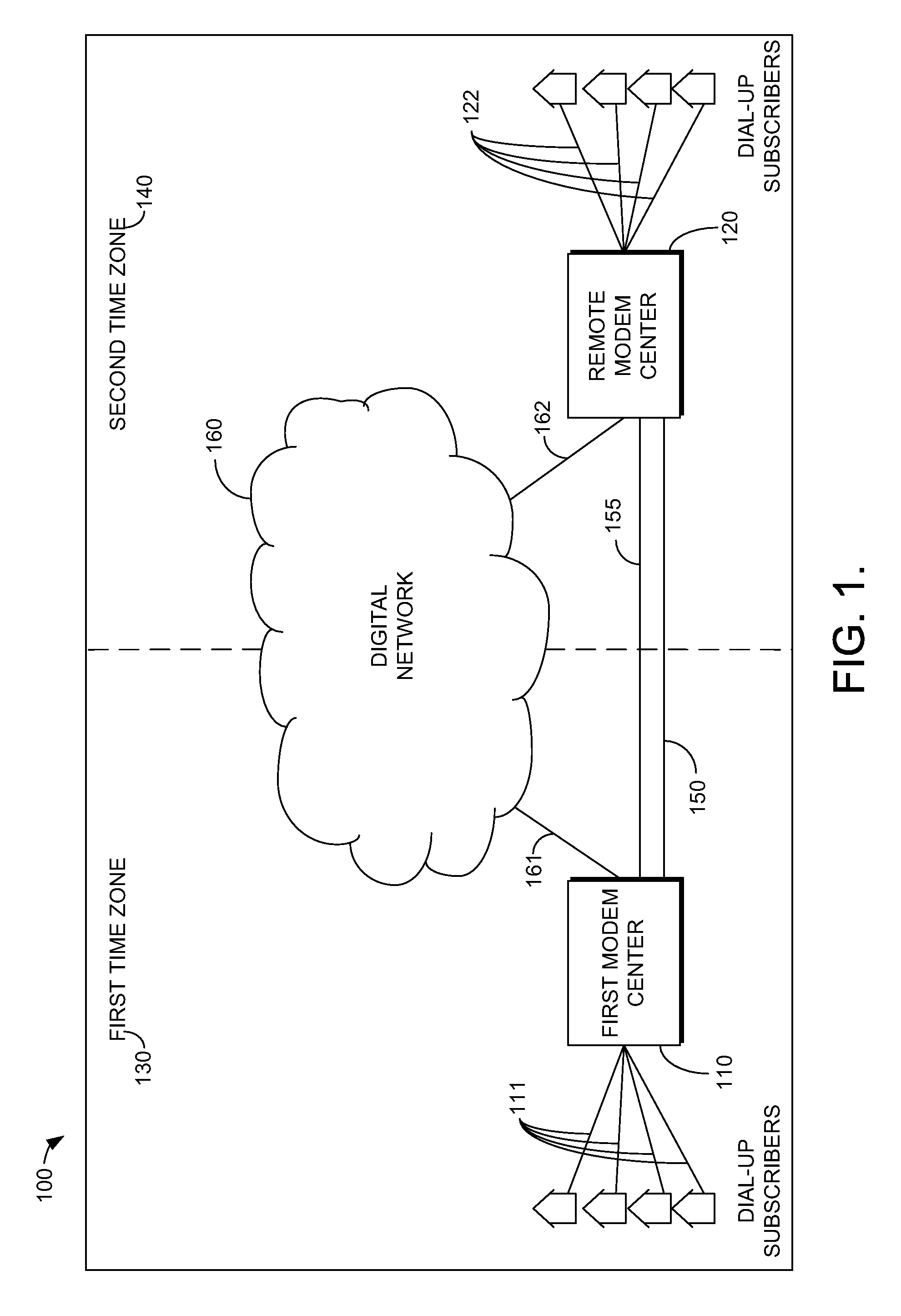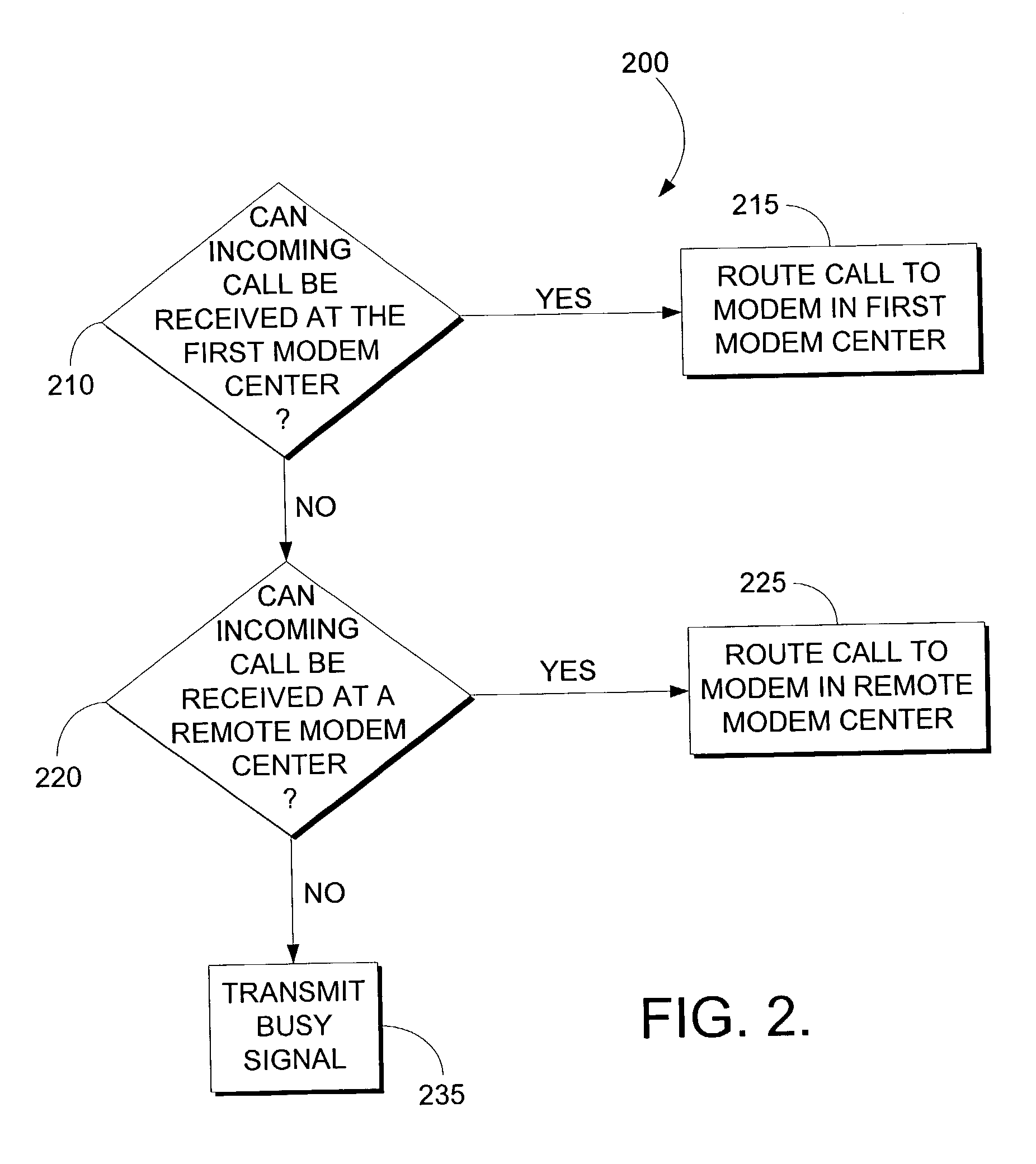System and method for routing incoming modem calls for dial up internet access
a dial-up internet access and incoming modem technology, applied in the field of system and method for routing incoming modem calls for dial-up internet access, can solve the problems of poor modem performance, difficult to obtain an available isp modem, and busy signals delivered to users, so as to optimize improve the performance of isp modem, and improve the effect of dial-up isp modem performan
- Summary
- Abstract
- Description
- Claims
- Application Information
AI Technical Summary
Benefits of technology
Problems solved by technology
Method used
Image
Examples
Embodiment Construction
[0020]The system and method in accordance with the present invention may be implemented in a variety of forms. One such form of a system in accordance with the present invention is illustrated in FIG. 1. FIG. 1 illustrates a system 100 including a first modem center 110 and a remote modem center 120. Dial-up subscriber lines 111 enter the first modem center 110. When a dial-up subscriber wishes to access the Internet via the ISP, a circuit-based link is established over the local telephone network via the lines 111 between the dial-up user's modem and the first modem center 110. Likewise, the remote modem center 120 is accessed in a like fashion by dial-up subscribers using telephone lines 122. As shown in FIG. 1, the first modem center 110 is geographically located in a first time zone 130, while the remote modem center 120 is geographically located in a second time zone 140. The positioning of the first modem center 110 and the second modem center 120 in a first time zone 130 and ...
PUM
 Login to View More
Login to View More Abstract
Description
Claims
Application Information
 Login to View More
Login to View More - R&D
- Intellectual Property
- Life Sciences
- Materials
- Tech Scout
- Unparalleled Data Quality
- Higher Quality Content
- 60% Fewer Hallucinations
Browse by: Latest US Patents, China's latest patents, Technical Efficacy Thesaurus, Application Domain, Technology Topic, Popular Technical Reports.
© 2025 PatSnap. All rights reserved.Legal|Privacy policy|Modern Slavery Act Transparency Statement|Sitemap|About US| Contact US: help@patsnap.com



